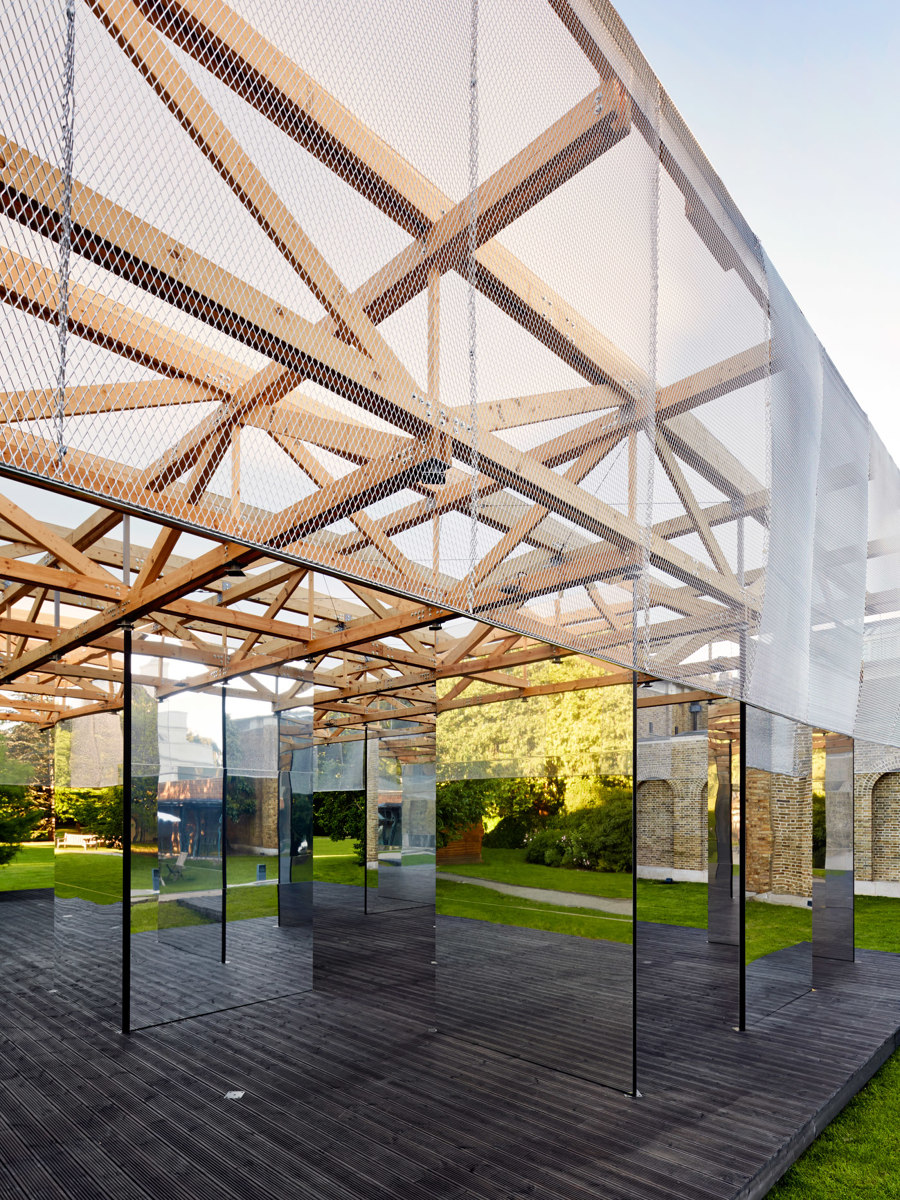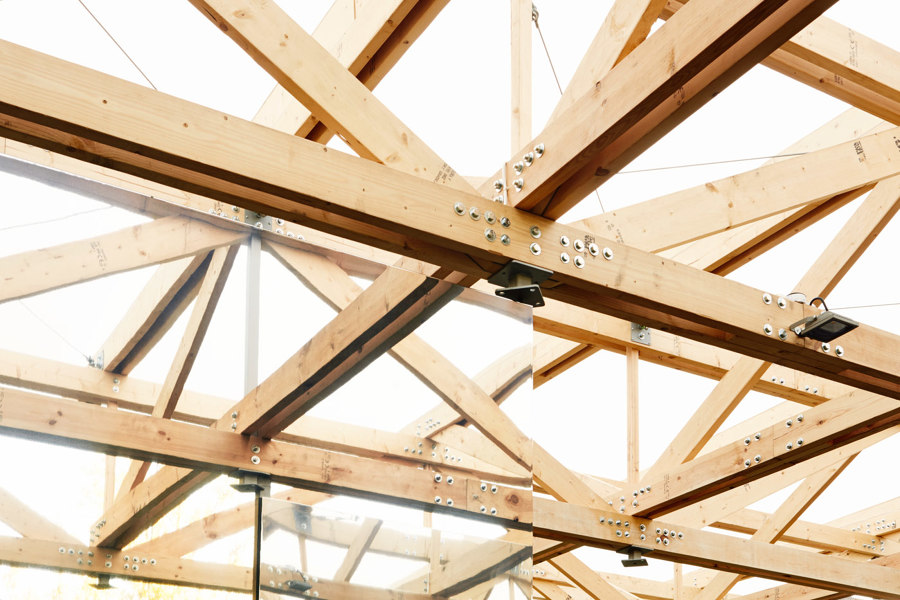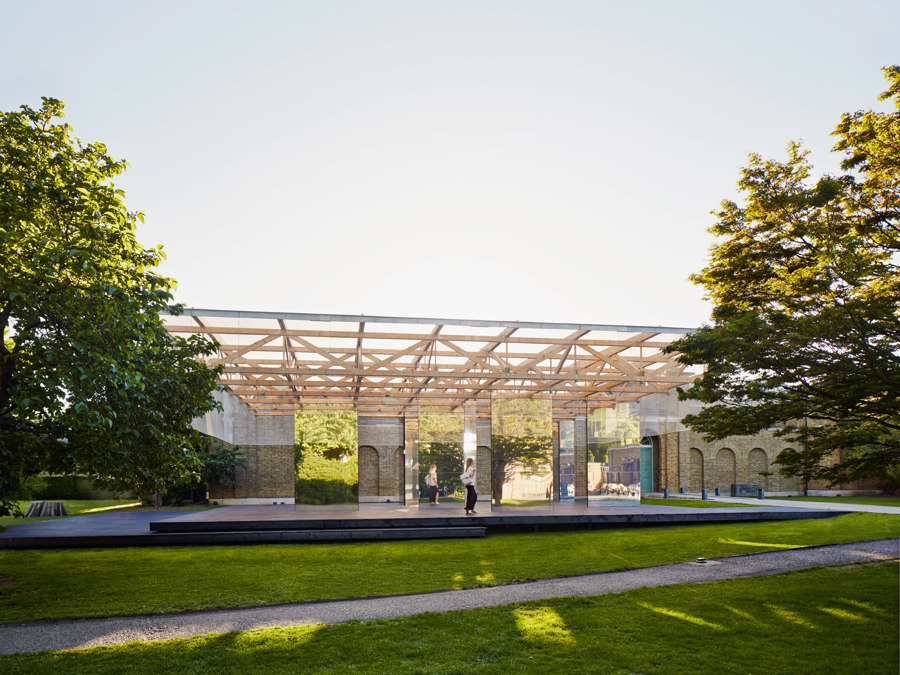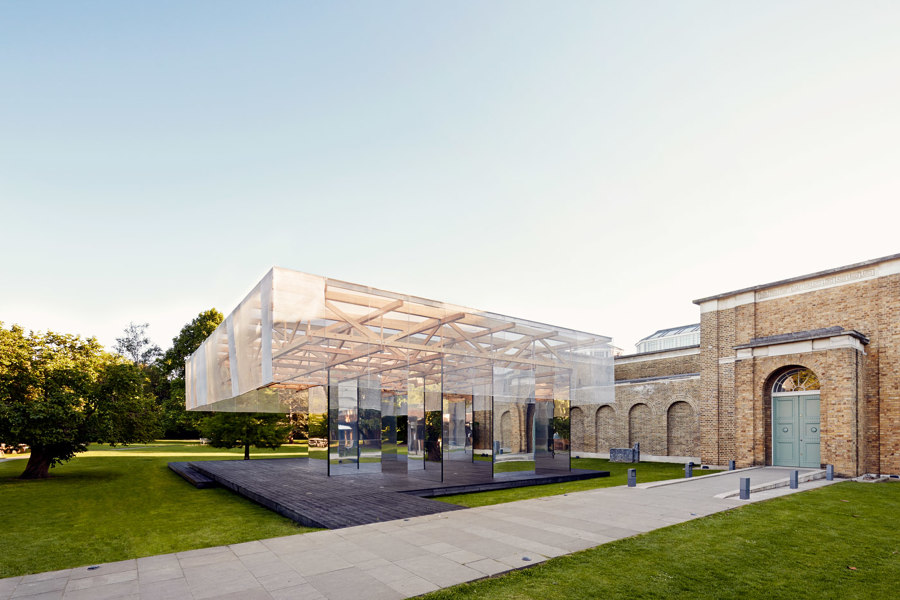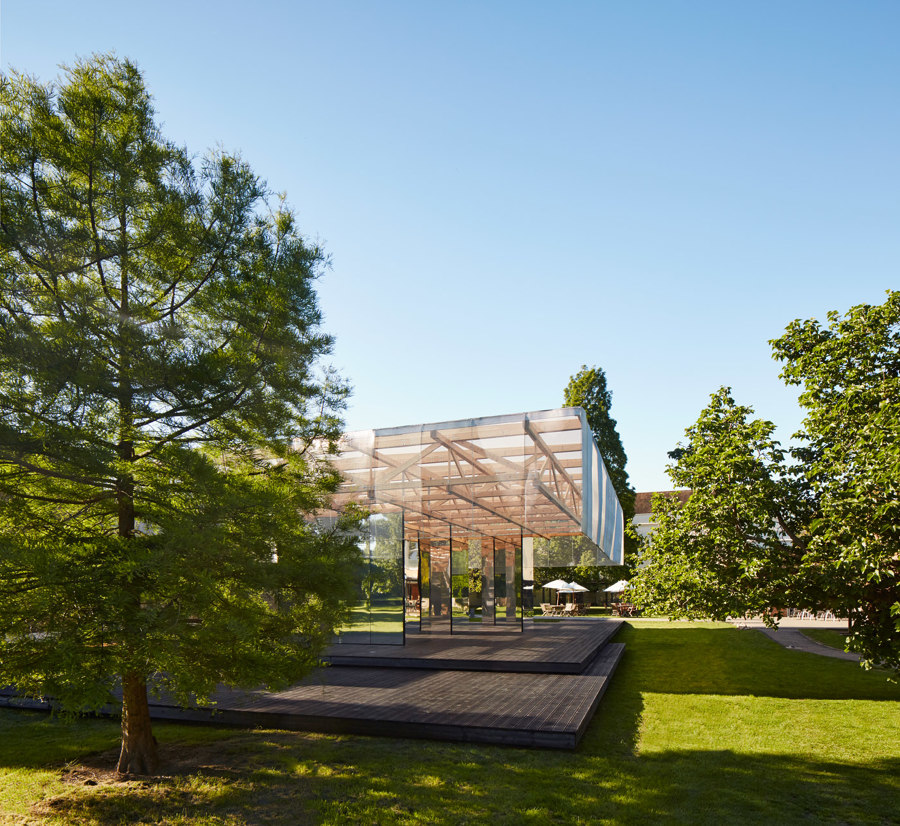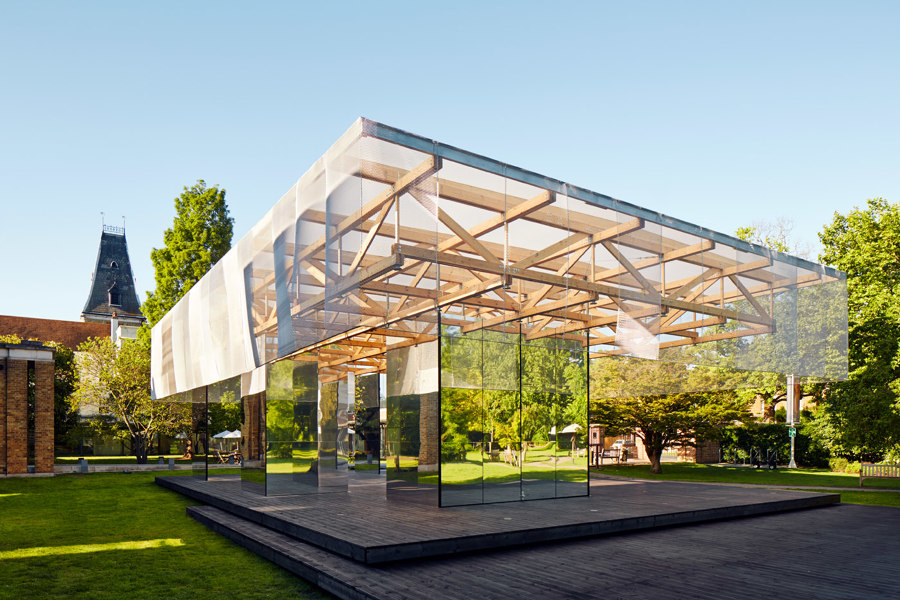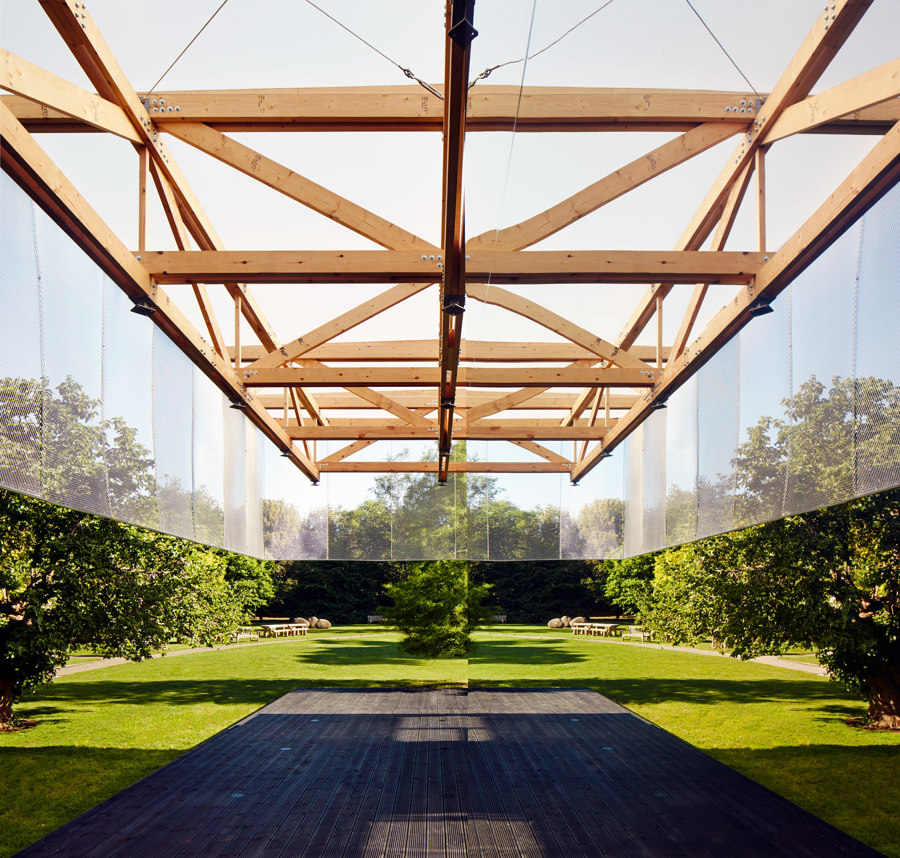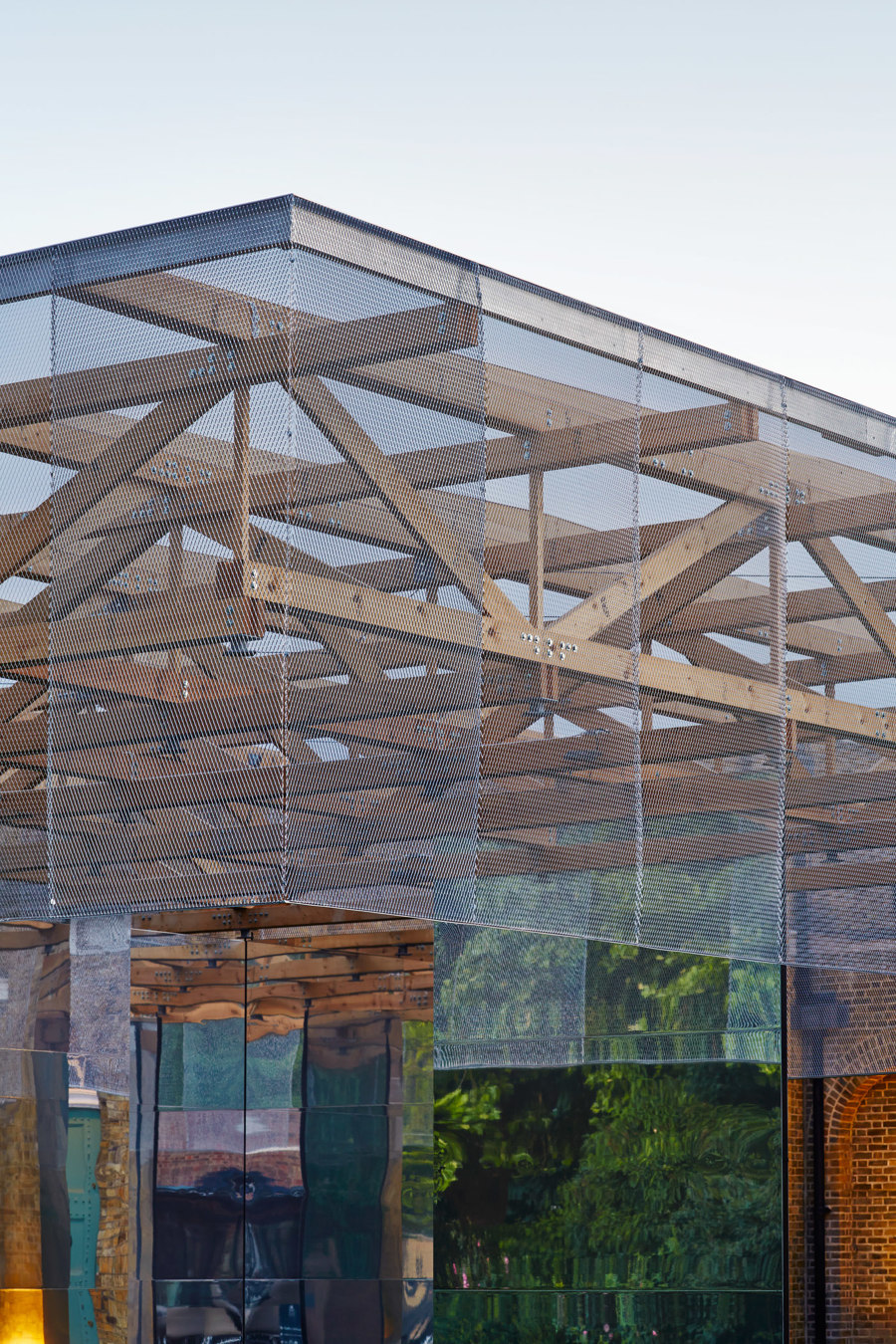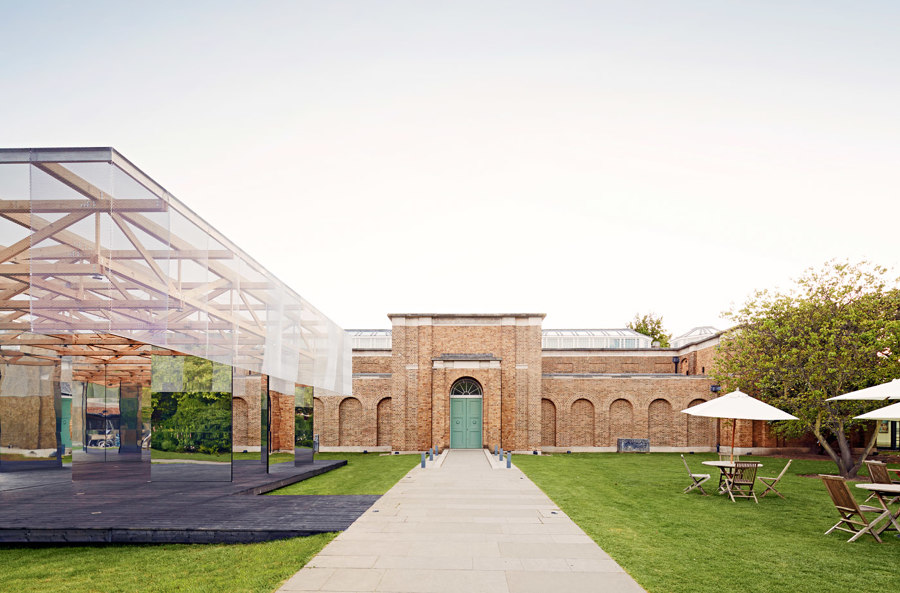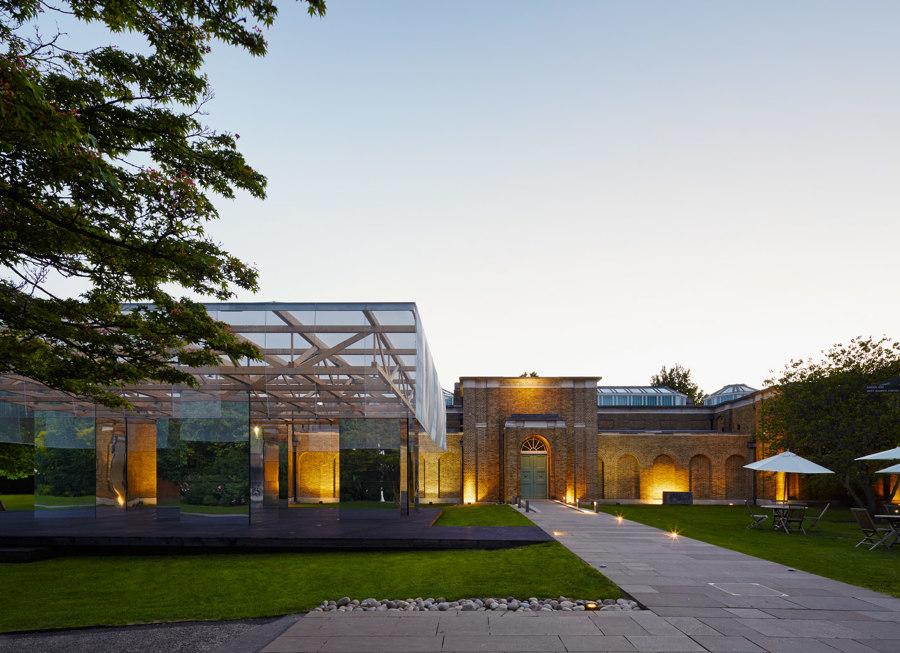The Dulwich Pavilion is a transformative project for Dulwich Picture Gallery and Almacantar, a breakthrough moment for a young architecture practice, and an important legacy for the London Festival of Architecture 2017. The Gallery’s first pavilion extends into the surrounding landscape, celebrating Soane’s original architecture and allowing the Gallery to overcome a lack of existing space and meet increasing visitor demand. IF_DO’s design, developed with engineers StructureMode and realised by bespoke fabricators Weber Industries, offers a model for other cultural institutions facing similar issues, and responds to the LFA’s mission to champion London architecture and promote positive change to the city’s public realm.
The London Festival of Architecture and Dulwich Picture Gallery launched the pavilion design competition in autumn 2016, with support from Almacantar. Entrants were challenged to design a contemporary response to the original Soane building and its garden setting, while working with a modest construction budget of just over £100,000. Bermondsey-based practice IF_DO, established in 2014 by Al Scott, Sarah Castle and Thomas Bryans, overcame competition from a field of 75 entries with their design ‘After Image’. It was chosen by a judging panel of leading architectural and cultural figures including Ruth Rogers (chef and founder, River Café), Carl Turner (founder and director, Carl Turner Architects), Mike Hussey (Chief Executive, Almacantar) and Nancy Durrant (arts commissioning editor, The Times)
The Dulwich Pavilion has been designed as a temporary public structure, which engages with the adjacent buildings, landscape and visitors alike. Conceptually it responds to the solidity and monolithic nature of Sir John Soane’s Gallery building, and the porous, ever-changing nature of the landscape. Structurally the pavilion is lightweight and minimal, comprising a timber truss roof suspended over a level timber deck supported on three fixed slender mirrored panels. All of the remaining wall panels are moveable or removable, creating a flexible space enabling numerous configurations for different events. A fixed bar/café pod opens up when in use to reveal a serving area.
The reflective quality of the mirrored screens reflects and disrupts the context. Fragments of the building appear in the landscape, and fragments of the landscape in the building. The roof overlaid with a mesh veil creates a canopy-like environment that enhances the layering of images and the interplay of space, perception and memory: this year’s London Festival of Architecture theme.
The pavilion’s elegant structure, developed through close collaboration between the architects, engineers and fabricators, demanded precision in both design and manufacture. Bespoke steel, aluminium and timber components were all fabricated by Weber Industries in their Peckham studio, before the structure was assembled on site. The pavilion has been engineered by StructureMode to allow efficient construction, with minimum disruption and environmental impact to the historic grounds.
The Dulwich Pavilion will be free to explore all summer with free themed Friday Lates in June and July including admission to the Permanent Collection. The Pavilion Bar will be run by the team behind The Camberwell Arms.
Tamsie Thomson, Director of the London Festival of Architecture, said: “The Dulwich Pavilion brings together the world’s oldest public gallery and the world’s largest annual architecture festival. We have worked together with IF_DO, Dulwich Picture Gallery and Almacantar to produce a fantastic building that offers a delightful solution to practical problems, and will give hundreds of people a taste of the brilliance of London’s architectural scene.”
Jennifer Scott, the new Sackler Director of Dulwich Picture Gallery, said: “This pavilion, with its reflective surfaces and elegant design, is the perfect way for us to celebrate the innovation of Sir John Soane’s original Dulwich Picture Gallery building which first opened to the public 200 years ago. It also marks our commitment to finding continually fresh and exciting ways of bringing art to life for all our audiences.”
Al Scott, Co-founding Director, IF_DO, said: “The Dulwich Pavilion has provided a wonderful opportunity for us to create a unique public structure in an exceptional setting. We have benefitted hugely from the freedom given by our clients and support of the London Festival of Architecture. Working in close collaboration with creative engineers StructureMode and fabricators Weber Industries to realise the project has been a great experience, and vital to it’s success.”
Mike Hussey, Chief Executive, Almacantar, said: “The Dulwich Pavilion showcases how great design responds to, and enhances, a place. IF_DO has created an accessible and engaging pavilion that complements the classic work of Sir John Soane’s gallery. Emerging and established talent should sit side by side in a city that is constantly reinventing itself.”
The Dulwich Pavilion opens to the public on 2 June and will be open until 8 October 2017. The Dulwich Pavilion is a partnership between the Gallery, the London Festival of Architecture and Almacantar with support from Arts Council England and in-kind support from StructureMode.
Design Team:
IF_DO
Fabricator: Weber Industries
Structural engineer: StructureMode
Client: Dulwich Picture Gallery, London Festival of Architecture and Almacantar


